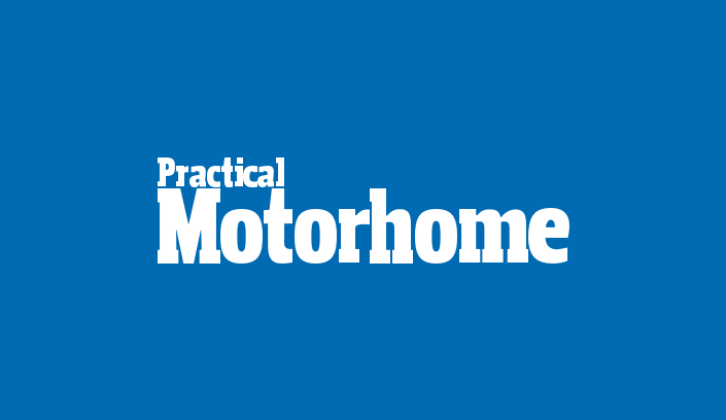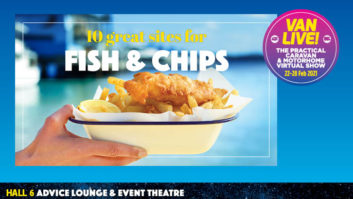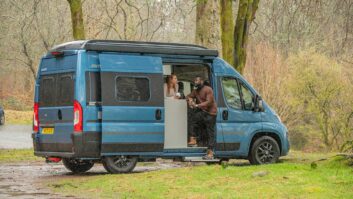Legend has it that when marauding Vikings invaded Ireland, they stashed their ill-gotten gains underground, leaving some behind when they returned to their homelands.
This ‘gold’ was found by the leprechauns, who reburied it in even deeper places, well away from prying eyes – but the hiding places were revealed at the rainbow’s end. The myth might be fanciful, but Ireland does have gold deposits and a golden coast, stretching from Dungarven to Stradbully on its south-eastern shores in Co Waterford.
Ireland’s heritage, though, lies with another metal – copper – the mining of which dates back to the Bronze Age in Co Kerry and Co Cork, and it is the Copper Coast, in Co Waterford, that in the 19th century, became one of the most important mining areas in the world.
This rugged stretch of coastline from Kilfarrasy Beach in the east to Stradbully in the west has been designated a UNESCO Global Geopark, but more importantly for the visitor, it is a beautiful area to drive or, if you have strong legs, cycle.
I was in the Republic helping colleague Bryony delve into her Irish heritage in Co Wexford. Sadly, her clan gathering was cancelled, but we decided to explore the area, nonetheless, making our base at Duncannon Beach, with access to the Hook Peninsula in the south, the Irish National Heritage Park ar Wexford in the east and New Ross further north).
The lack of clan events meant Bryony and I had time to take in our Benivan 122 (loaned by Marquis Motorhomes) across county borders into Waterford to explore the seriously undulating (hence the need for strong legs!) Copper Coast.
Long stretches of beach
The best thing about Duncannon Beach campsite is its location, just a road’s width from a long stretch of sandy beach. On foot, the beach is the quickest route into Duncannon and its pubs; Roches Bar & Restaurant serves good pub food, and I particularly recommend the bangers and mash helped down by a half of Guinness.
It’s a lovely stroll from the site in the evening, and is popular with dog-walkers in the early morning At low tide the sand is firm enough to drive on and at weekends, you’ll find families setting up camp on the beach around their car.
From Duncannon, the quickest route into Co Waterford is via the Passage East ferry, which sails on the Co Wexford side from Ballyhack just a 10-minute drive away.
The ferry costs €12 return, which is paid on board. It makes short work of crossing the River Barrow, which by road would be a half-hour drive up to New Ross, and it’s great fun.
After landing, we avoided busy Waterford by taking the R685, then the R675 through Tramore, past its racecourse and on to Fenor, were I spotted signs for Fenor Bog (more on that later).
Then the road follows the coast, offering various stopping points where you can simply stand and stare at the glorious views across the rugged coastline and far out to sea. Face the other way for distant vistas of the Comeragh Mountains.
Our tour was in May and we were blessed with stunning weather, giving clear blue skies and a deep blue sea scattered with diamonds of light; we even managed to acquire a tan!
Meandering along the coastal road, we passed gorgeous banks of pink thrift, and many cyclists – whole pelotons of them. But, bikes aside, there is really very little traffic here.
After the hairpin bend that takes you around Kilmurrin Beach – it’s easy to park a motorhome here, and worth a stop for a photograph or just to gaze out to sea – we came across the ruined Tankardstown Engine House, a relic of operations run by the Mining Company of Ireland in the 19th century. This was the company’s second mine in the area, the first being a little further west at Knockmahon, where they mined to depths of a quarter of a mile and then the same distance out to sea. When this mine became too expensive to run, they moved on to Tankardstown, where the mine reached peak production in 1865. However, by 1879, the mine was exhausted.
Learn about local geology
A little further on is the village of Bunmahon. Here, an attractive white-painted, 19th-century church, which once helped to provide religious solace to the townsfolk, now houses the geopark visitor centre.
There is much to learn bout the local geology. Volcanoes, deserts and glaciers all had an impact on the formation of the coastline and the treasure within, which began its journey, unbelievably, at the South Pole.
Lead and silver was also mined along this coast, with the mines attracting workers to boost the town’s population to 2000 by 1840. That populace was supported by 21 public houses, two hotels, shops, a creamery and a bacon factory. There was also a pawn shop and by 1842, a temperance hall, built to deal with the miner’s drunkenness.
You can find out more about this fascinating area at the Copper Coast Geopark website. You can also stop at the visitor centre for coffee and cake – necessary fuel to help the brain absorb so much information!
After Bunmahon, the R675 turns away from the coastline, although you can still follow the coast road, which gets a little narrow in places. We broke away from the road to visit Stradbully Cove, marking the end of the Copper Coast and the start of the Gold Coast. The short road to the cove ends in sand and runs beside the outlet of the River Tay. Note that you should ensure you can safely turn around before venturing too far.
Sea views and a good lunch
We decided to explore further on, rejoining the R675 at Ballyvoile and on to Knock, where fine sea views were once more dominant. We were heading for Dungarvan and lunch. This harbour town is built around a bay and was, until 2014, the county town of Co Waterford.
We parked for free on the R911 and walked over the bridge to Davitts Quay, where we found it quite difficult to choose between several enriching pubs for lunch. We eventually settled for fish and chips at the Anchor Bar.
First impressions were that Dungarvan is a pretty place, worth exploring – it has a castle and a museum and in the 19th century, the remains of a woolly mammoth were found in a nearby cave.
Walking back across the bridge, we saw a man on a penny-farthing bike, which was decorated with flowers, cycling through the traffic with the greatest confidence. He was too fast for me to snatch a photo, but we later found out that Dungarvan was home to Ireland’s first cycling club, The Dungarvan Ramblers, founded back in 1869, when it held its first bicycle race. I imagine the event was chaotic; bikes at the time, although not penny-farthings, did have huge front wheels.
Back at base, Bryony wanted to spend some time with her parents, who had also decided to continue with their visit despite the cancellation of clan events. This left me free to take a look at the coves and beaches along the Copper Coat in a little more detail.
Once off the Passage East ferry, I began with Dunmore East, where, having parked up, I got a glimpse through trees of Ladies’ Cove from above. Apparently, there is a Men’s Cove, too! Further on is Lawlor’s Beach, where some hardy children were bodyboarding. Dunmore East is a pretty town, with white thatched cottages that look a little as though they belong in the cult TV show The Prisoner.
Glacial activity
I moved onwards, past Tramore to Killarrasy beach, the beginning of the Copper Coast, where I learned from an information board that the yellow-brownish layer in the cliffs before me consisted of clay, boulders and sand dumped by melting glaciers at the end of the Ice Age 12,000 years ago. The light-grey layer of ash and debris was laid down 455 million years ago, when volcanoes erupted under the sea and at the same time, lava was dissolving minerals and depositing metallic sediments.
The board was a great help in understanding the evidence on the cliff face before me of the creation of our ancient world. I noticed a ‘door’ in the rocky promontory here, not unlike Durdle Door in Dorset.
Following the road up to Fenor, I happened to glance to the right as I passed the church and spotted a rather extraordinary sculpture in the churchyard, which warranted a closer look.
It was a tree that had lost its canopy but gained some angels carved into its trunk. An elderly man called Peter came over to talk to me about it. He told me that he tends his wife’s grave here, and is often asked to take photos of visitors by this tree.
Sculpture from the trees
The story was that when the tree started to die, local wood sculptor John Hayes begged for it not to be felled. He carved the ‘Angel of Fenor’ with a chainsaw and chisels, adding his mother’s name – Eileen – and the word ‘Hope’. Hayes is renowned for Dragonslayer, the world’s longest (23m) sword sculpture carved from a single tree. This is on permanent display in Waterford.
Peter went on to tell me about the Fenor Bog, just beyond the graveyard. It’s one of the rare wetland habitats of Europe and important for its biodiversity; it’s also part of the UNESCO Global Geopark. The park’s boardwalk is made from recycled plastic and it takes about 15 minutes to walk around, longer if you are stopping to spot the abundant wildlife. I thanked my guide and took to the boardwalk. The bog is apparently unusual for its high concentration of St John’s Wort. The walk was enjoyable, but my knowledge of botany is limited, so I didn’t dally.
Some of the coves on the Copper Coast have rivers running into them; needle-like structures show where the sea has eroded into the cliff face. All of the coves were virtually empty of people, save for the occasional dog-walker.
Most were sandy, whiie some were very pebbly with stones coloured green (copper), red (iron) and blue (slate), and many had notices explaining the area’s geology. My favourite was Stradbally.
Shimmering cliff faces
The beach here was deep, but quite narrow. The cliffs were vertical slate, shimmering with silver and weeping with moisture quite low down.
The erosion was fascinating. Two other visitors had set up a couple of chairs near the cliff face to soak up the sun. I felt like a bit of an intruder, with my camera – they clearly thought they had this glorious little cove to themselves. I quickly took my pictures of the cliffs and stood and wondered at the beauty of it all, before beating a retreat back to the ‘van.
The Copper Coast Scenic Drive and Cycle Route, one of the treasures of Ireland, is very beautiful and worth taking time over. You can find out more here and watch some fantastic footage of the area on YouTube, before going to see for yourselves.
TOUR ESSENTIALS
Where we stayed
- Address Duncannon, Co Wexford, Ireland
- Tel +353 51 389 707
- Open March to October
- Touring pitches 20
- Pitch+2+hook-up €30-€35
We stayed at this site to give Bryony access to the places of her heritage, but the best thing about Duncannon was its proximity to the beach. With all the comings and goings we never actually made it onto the campsite proper; instead we pitched in the adjacent field, which had plenty of hook-ups, fresh water and a more pleasant aspect – we were happier here. If security is important to you, you will be pleased with the huge, solid, sliding gates that you need a code to access in the evening and early morning.
Other sites nearer the Copper Coast include:
- Address Newtown Cove, Tramore, Co Waterford
- Tel +353 51 381 979
- Open 18 April – 29 September
- Touring pitches 40 (30 hardstanding)
- Pitch+2+hook-up €28-€33
- Address Dunmore East, Co Waterford
- Tel +353 87 702 2566
- Open 26 April – 15 September
- Touring pitches 54
- Charges €25.50-€29.50
Fitzmaurice’s Caravan and Camping Park
- Address Tramore, Co Waterford
- Tel +353 51 381 466
- Open 30 March-30 September
- Touring pitches 82
- Charges €35-€37
Find out more
Costs (duration 4 nights)
- Ferry (Stena Line): £370
- Ferry (Passage East): £10
- Fuel: £127
- Site fees: £101
- Food and drink: £67
- TOTAL: £675
The motorhome
The Benivan 122 (on loan to us from Marquis Leisure’s Surrey Branch) seats four and sleeps two.
Parallel sofas at the rear served as both lounging area and sleeping quarters, with the sofas long enough for comfortable single beds. The cab seats swivel to form a front dinette with the other two belted seats. It was an easy drive, too, with its compact dimensions coping well with Ireland’s twisty, but near empty roads. Ours had a useful rear-view camera.
If you’ve enjoyed reading this article, why not get the latest news, reviews and features delivered direct to your door or inbox every month. Take advantage of our brilliant Practical Motorhome magazine SUBSCRIBERS’ OFFER and SIGN UP TO OUR NEWSLETTER for regular weekly updates on all things motorhome related.
Then the road follows the coast, offering various stopping points where you can simply stand and stare at the glorious views across the rugged coastline and far out to sea.









